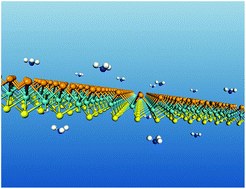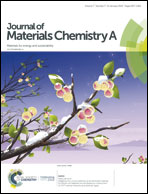A Janus MoSSe monolayer: a superior and strain-sensitive gas sensing material†
Abstract
Recent fabrication of a Janus MoSSe monolayer has raised exciting prospects of developing polar two-dimensional (2D) materials that exhibit excellent properties for nanodevice applications. Here, we proposed MoSSe as a superior gas sensing material by investigating the adsorption of CO, CO2, NH3, NO and NO2 on the Janus layer by first-principles calculations. Due to the presence of out-of-plane polarization originating from the asymmetrical structure, it is found that NH3 adopts distinct opposite orientations when it is adsorbed on the Se or S side of the Janus layer. The binding strengths of all the molecules adsorbed on the Se surface are generally much stronger than those on the S surface. More interestingly, upon strain deformation, the adsorption strengths of NH3 and NO2 molecules on the Se side of MoSSe can be remarkably enhanced, but gradually lowered on the S side. We revealed that the strain-dependent adsorption behavior is driven by a significant change of electrostatic potential difference between the Se and S surfaces under tensile strain. Corresponding to the distinct adsorption behaviors on the two sides, different electronic variations are also revealed. With higher gas sensitivity, and surface and strain selectivity, Janus MoSSe is proposed as an ideal material for constructing ultrahigh-sensitivity nanoscale sensors.



 Please wait while we load your content...
Please wait while we load your content...